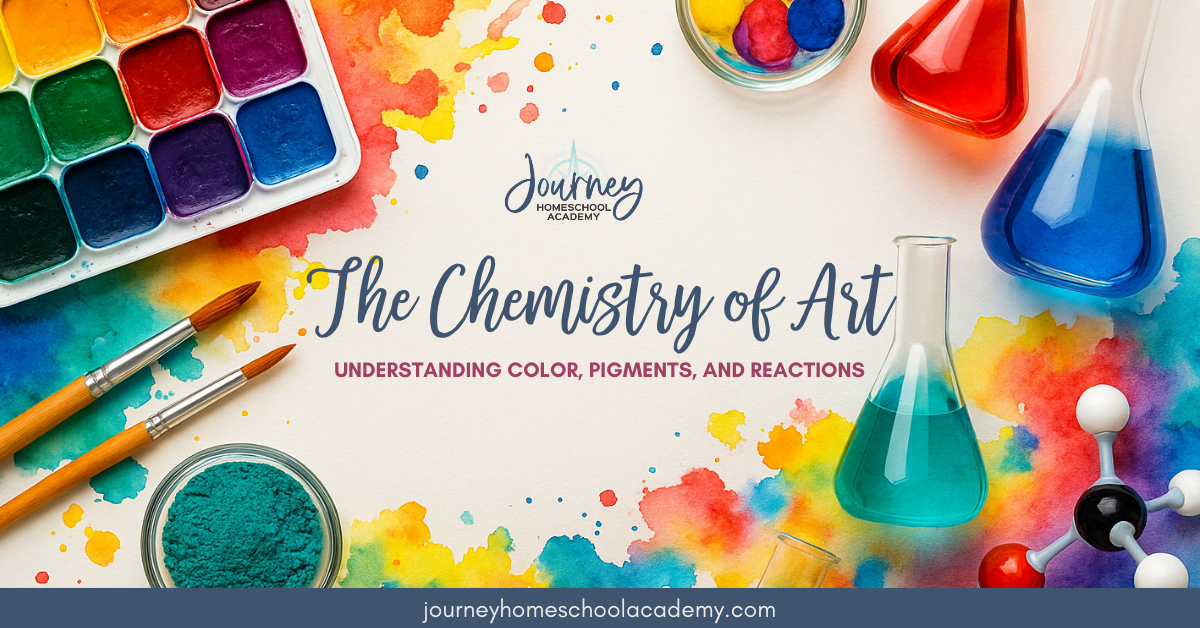Last week, my son mixed every single paint color on his palette. He held up the brush proudly and said, “Mom, look, I made a rainbow!”
It looked more like a muddy swamp than a rainbow. But instead of just laughing it off, we turned it into a homeschool lesson. Why does mixing all those colors together turn brown?
That moment, when art turns into science, is one of the sweetest parts of homeschooling. And it is why today we are exploring the surprising connection between chemistry and art.
The Chemistry of Art: Understanding Color, Pigments, and Reactions
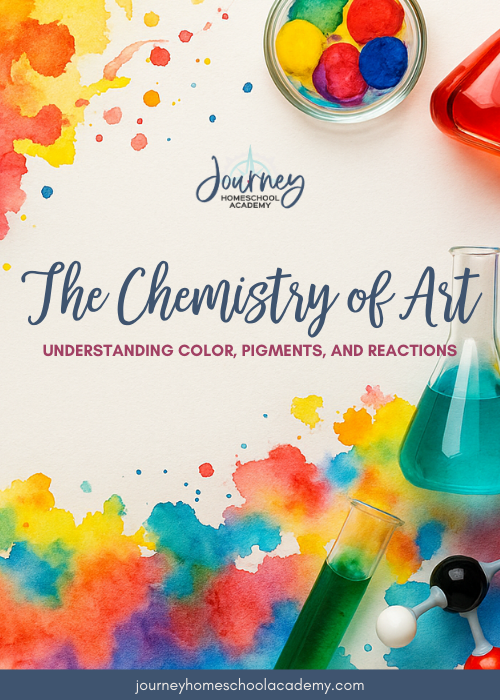
Why We See Color in the First Place
God wired our eyes in a pretty incredible way. Inside our retinas, little cells called rods and cones pick up light. At the tiniest level, a molecule actually flips shape every time light hits it, and your brain translates that flip into “green grass,” “blue sky,” or “that suspicious purple streak on the dog.”
When kids learn this, suddenly color isn’t just “pretty.” It is living proof that creation is both beautiful and ordered.
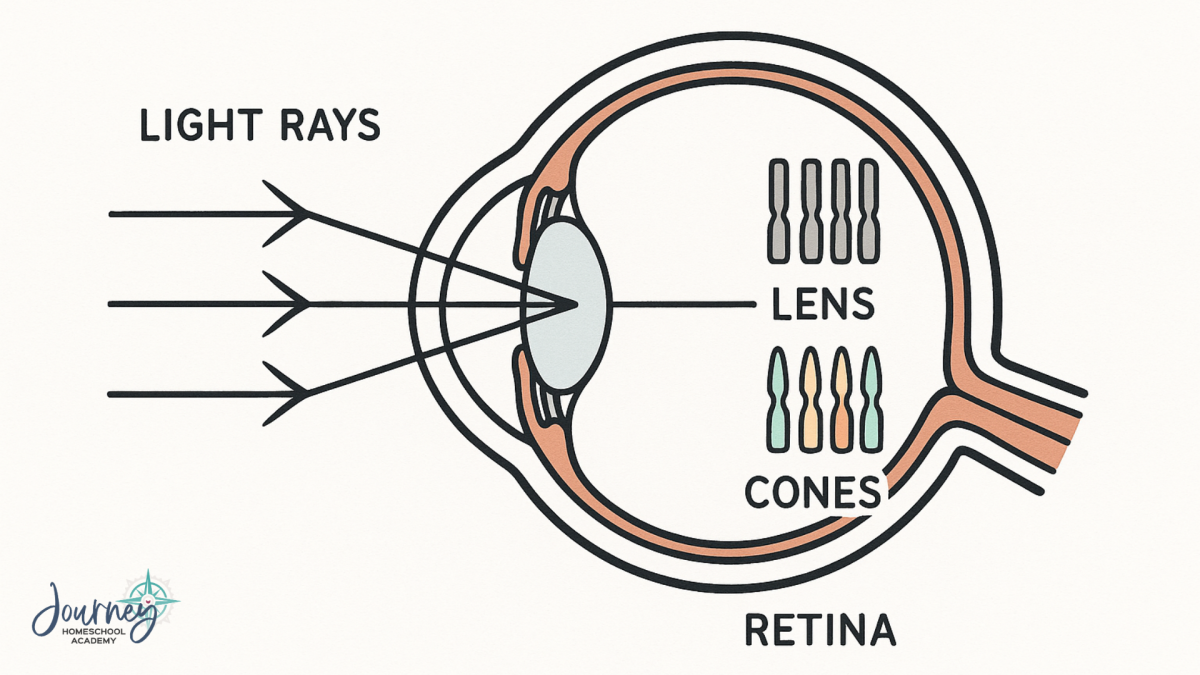
A Short Story of Pigments
For most of history, colors were expensive, rare, or both.
- Purple came from ground-up snails. Only kings and queens could afford it.
- Ultramarine blue came from lapis lazuli, a gemstone more valuable than gold.
- Red often came from crushed insects. (Don’t tell your squeamish child until after art class!
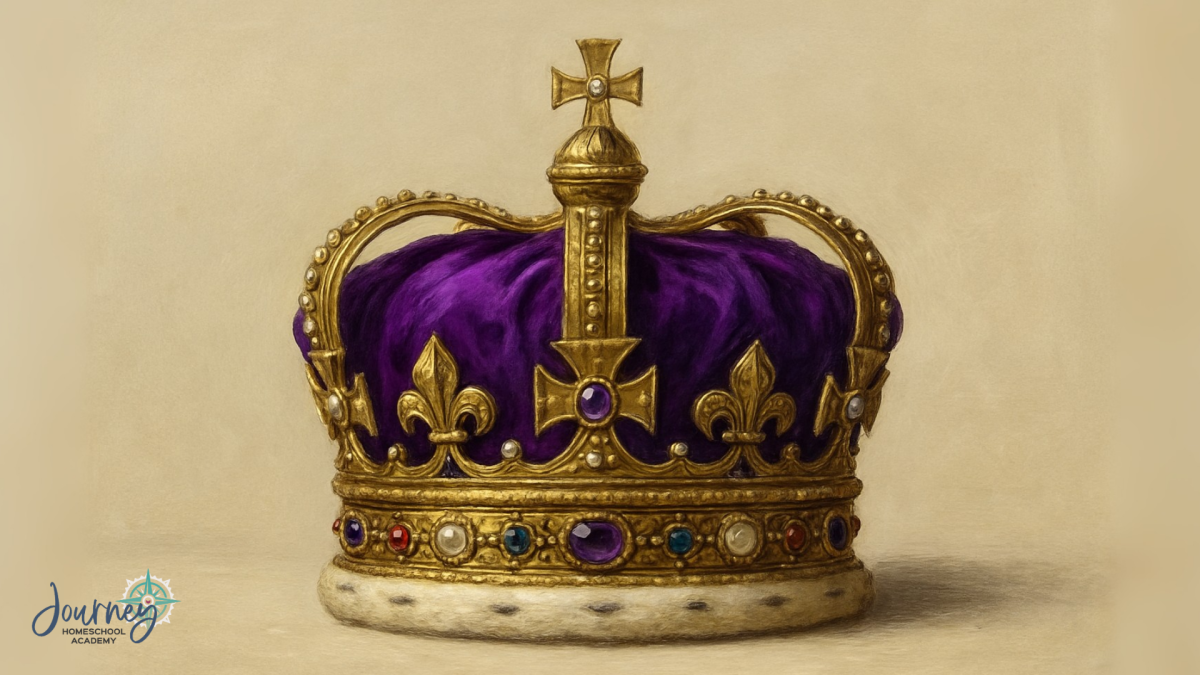
Then chemistry gave us happy accidents:
- In 1856, an 18-year-old student failed at making medicine but accidentally invented mauveine, a gorgeous purple dye that anyone could buy.
- In the 1700s, a chemist spilled the wrong ingredient and created Prussian Blue, the deep blue you’ll recognize in classic Japanese prints.
Suddenly, color wasn’t just for the rich. It was for everyone. What a perfect picture of God’s common grace in creation.
Why Some Paints Behave Differently
If you have ever wondered why acrylic dries in minutes while oil paintings can take weeks, here’s the simple version:
- Watercolors: The water evaporates, leaving color behind.
- Acrylics: The water evaporates, and plastic-like particles fuse together.
- Oils: The oils slowly react with oxygen in the air, sometimes for years.
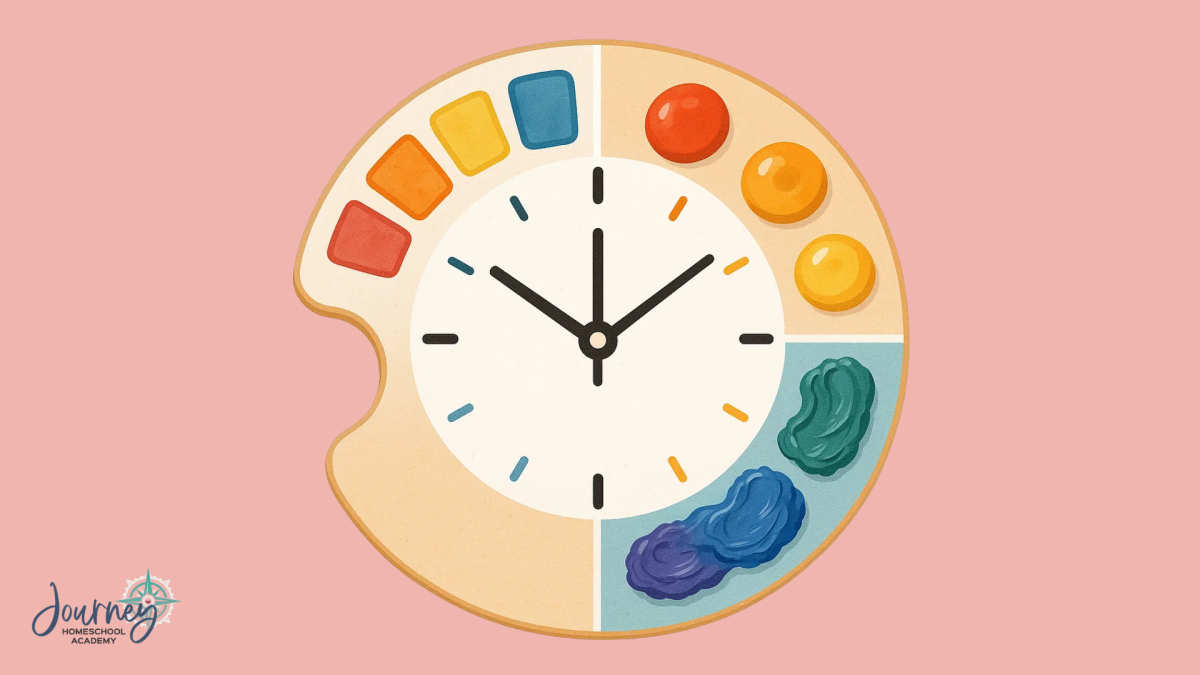
That is why Van Gogh could blend swirls for days, while your child’s acrylic “masterpiece” is glued to the paper before you can find the rinse cup.
Homeschool tip: Use fast-drying paints with younger kids (they won’t smudge everything). Save slow-drying mediums for older students who want to experiment.
Ultra-Black and Shimmering Feathers
Ever heard of Vantablack? It is a super-black coating that traps almost all light. Objects coated in it look like someone cut a hole in reality, flat, eerie, and strange. You can’t buy it for home use, but it sparks great discussion: Is it even a “color” if no light comes back to your eyes?
On the other end of the spectrum, some colors don’t come from pigments at all. Peacock feathers and butterfly wings shimmer because of microscopic structures bending light, not because of dyes. That is why they seem to “change color” as you move.
Why Paintings Change Over Time
Did you know the colors we see in museums aren’t always the ones the artist painted?
- Reds can fade to blue.
- Bright yellows can darken.
- Whites can turn gray or black over decades.
Chemistry explains why, and modern scientists use tools like X-rays and infrared light to peek under the surface of famous paintings. It is like art detective work.
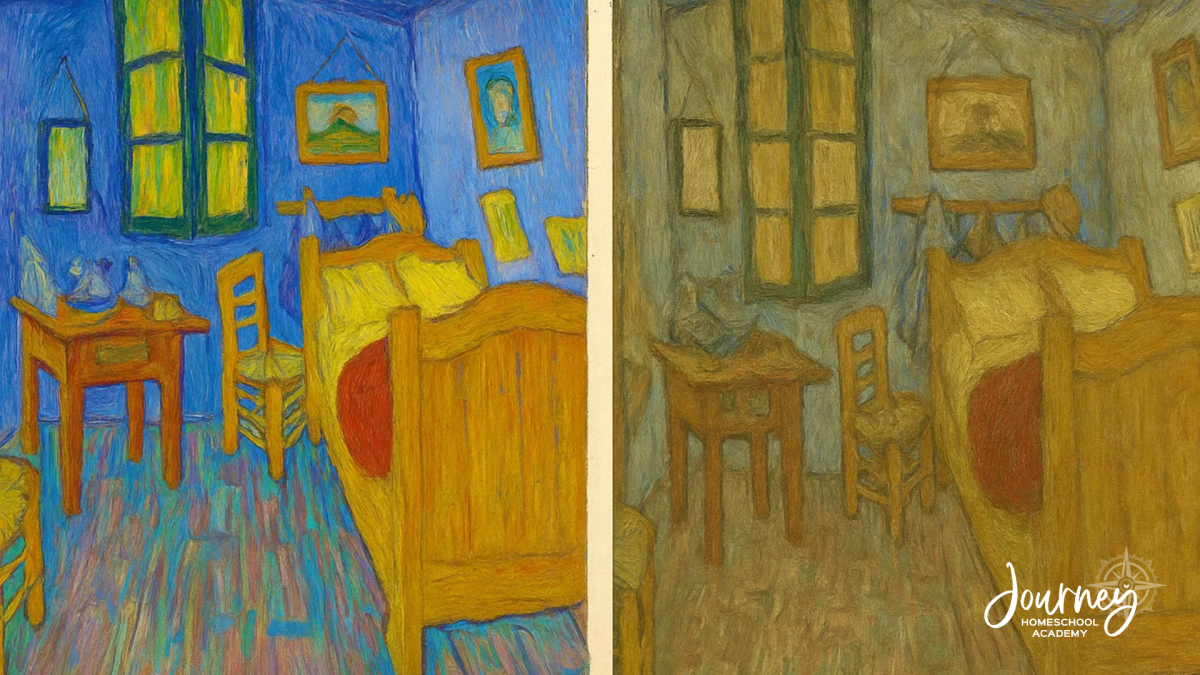
Easy Experiments for Your Homeschool
You don’t need a lab coat to explore the chemistry of art at home. Try these safe, hands-on activities:
- Red Cabbage Paints: Boil red cabbage and use the purple juice as “paint.” Brush vinegar over one spot (turns red) and baking soda solution over another (turns blue or green). Instant color magic.
- Sun Prints (Cyanotypes): Buy a kid-safe cyanotype kit. Place leaves, toys, or stencils on the paper, leave it in the sun, rinse in water, and watch the image appear.
- Light Check: Hang a painting near a window, then shine a flashlight or LED on it at night. Ask your kids: Why do the colors look different?
These experiments double as science and art, and they are guaranteed memory-makers.
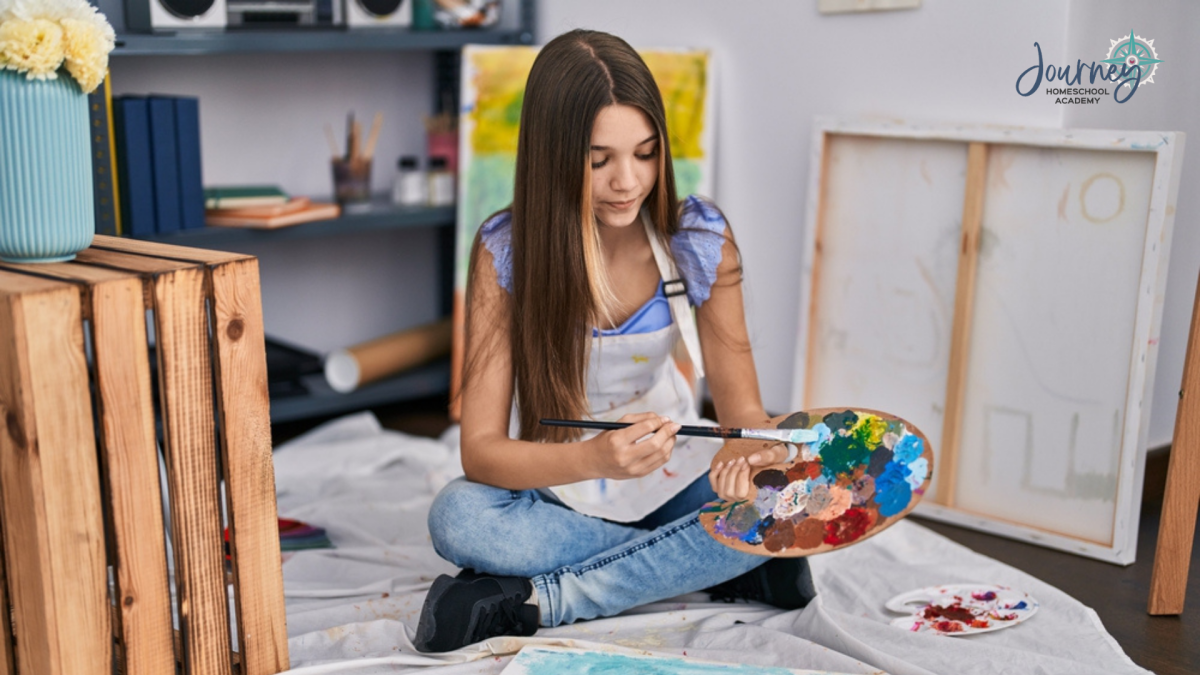
How This Fits Into Your Homeschool
If you want to keep this connection alive in your science curriculum, you don’t have to do it alone.
- Experience Chemistry connects topics like bonding, reactions, and polymers to real-world examples like pigments and paints.
- Discover Physics explores light and color.
- Earth Science Explored covers minerals that became historical pigments.
- With JHA’s co-op licensing, you can run a “Chemistry of Color” day without reinventing the wheel.
A Final Encouragement
Next time your child asks why their purple looks brown or why their sunset looks brighter outside than inside, smile. Those questions aren’t interruptions, they are invitations.
Invitations to show that God’s creation is both beautiful and discoverable.
Invitations to blend art and chemistry in a way that sparks joy and curiosity.
And who knows? That messy “rainbow” might be the start of your child’s love for science.
